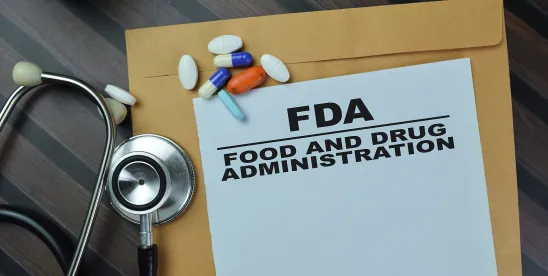Key Takeaways
- What Happened: HHS Secretary Kennedy directed FDA to consider removing the current self-affirmation pathway for determining that a food ingredient is Generally Recognized as Safe (GRAS).
- Who’s Impacted: Food and food chemical manufacturers.
- What Should You Do: Keep abreast of ongoing changes and look out for requests for comment and other opportunities to voice opinions on this potential change.
Major changes may soon come for food manufacturers and consumers alike. On March 10, 2025, a U.S. Department of Health and Human Services (HHS) press release reported that Secretary Robert F. Kennedy, Jr. directed the Food and Drug Administration (FDA) to explore rulemaking to eliminate the self-affirmation pathway (also known as “GRAS self-affirmation”) for determining whether a food ingredient is generally recognized as safe. Under current regulations, GRAS ingredients may be added to food products without FDA’s review or approval.
Eliminating this pathway would significantly alter FDA’s regulatory practices going back to the 1970s and could impact the availability of thousands of ingredients currently used in foods sold and consumed in the United States.
What is GRAS Self-Affirmation?
Under sections 201(s) and 409 of the Federal Food, Drug, and Cosmetic Act (FFDCA), any substance intentionally added to food is a “food additive” subject to FDA’s premarket review and approval, unless that substance is “generally recognized as safe” (GRAS). There is no statutory mechanism governing how GRAS status is confirmed. Initially, FDA managed GRAS determinations through its own evaluations of available data. However, in the 1970s, FDA introduced a voluntary GRAS affirmation process that permitted manufacturers to conduct their own safety assessments and submit petitions for FDA affirmation. Over time, this evolved into the self-affirmation pathway, where companies may independently determine GRAS status without mandatory FDA notification. In 1997, FDA proposed a rule to formalize the GRAS notification process. This rule was clarified and finalized in 2016; it is codified as 21 C.F.R. § 170.35. The rule was challenged by several NGOs but upheld in federal district court, which granted summary judgment in FDA’s favor. There was no appeal.
The 2016 GRAS rule formally substituted the prior GRAS affirmation petition process with a voluntary notification procedure where any person may notify FDA of their own determination that a particular use of a substance in food is GRAS. However, companies may also self-affirm that the substance they manufacture or use is GRAS for its intended use without notifying FDA of their determination. When done following rigorous scientific standards, the benefits of self-affirmation are numerous, both for the company and the consumer: self-affirmation encourages innovation and allows new substances to enter the market faster and at lower cost. A GRAS self-affirmation must be based not on an assumption that a given substance is safe, but rather on a careful assessment of relevant data. Often, companies will hire an expert panel to assess a particular substance’s safety for its intended use.
Should a company choose to notify FDA of its determination that a given substance is GRAS, the notification process is detailed and complex. Laid out in 21 C.F.R. Part 170, Subpart E, the notifier must submit a seven-part notification to FDA’s recently reorganized Office of Food Chemical Safety, Dietary Supplements, and Innovation in the Human Foods Program.
FDA then evaluates whether the submitted notice provides a sufficient basis for a GRAS determination. In doing so, it may consult with other agencies such as the U.S. Department of Agriculture’s Food Safety and Inspection Service, which regulates additives to meat, poultry, and certain egg products. FDA responds to the notification in one of three ways: (1) a no-questions letter, in which FDA states that it does not question the notifier’s GRAS determination; (2) an insufficient-basis letter, in which FDA concludes that the notice does not provide a sufficient basis for a GRAS determination; or (3) a letter stating that the agency has, at the notifier’s request, ceased to evaluate the GRAS notice. FDA publishes all filed GRAS notices (which now number over 1,200), along with its responses, in a public inventory.
GRAS self-affirmation has reduced regulatory barriers to the development and commercialization of novel ingredients, including alternative sweeteners, functional fibers, and plant-based proteins. While GRAS self-affirmation is intended to be just as scientifically rigorous as GRAS notification, the self-affirmation process largely shifts the responsibility for evaluating ingredient safety to private manufacturers, which critics argue has led to a lack of transparency and conflicts of interest. Prominent instances where FDA later challenged and denied a self-affirmed GRAS substance’s safety—such as for partially hydrogenated oils and tara flour—have periodically sparked debates over the adequacy of current self-regulatory practices.
The HHS Announcement
Secretary Kennedy directed the acting FDA commissioner to “explore potential rulemaking” to revise the 2016 GRAS rule and related guidance to eliminate the self-affirmation GRAS pathway. If GRAS self-affirmation is eliminated, companies seeking to introduce new ingredients in foods—or, potentially, to continue manufacturing or using ingredients already on the market subject to a GRAS self-affirmation—would be required to publicly notify FDA of their intended use of such ingredients, along with underlying safety data.
HHS’ announcement notes that FDA “strongly encourages” manufacturers to submit GRAS notices through FDA’s GRAS Notification Program, which currently processes approximately 75 notices per year. However, an unknown number of additional food ingredients have been self-affirmed as GRAS without FDA notification, which the announcement characterizes as a “loophole.” The announcement does not mention how FDA might staff the increase in its oversight and review of a potentially significant influx of GRAS notifications should self-affirmation be removed.
However, HHS may not stop at administrative action to eliminate GRAS self-affirmation and require GRAS notification to FDA. The HHS press release also states that the agency could potentially work with Congress to “completely close the GRAS loophole.” It is not yet clear how far that might go.
Next Steps
Secretary Kennedy has not set a timeline for this action. The process of rescinding or revising a federal rule mirrors the years-long process for promulgating a new one.
FDA will first have to assess whether the GRAS Rule should be rescinded or amended. This process will likely take over a year, particularly if FDA intends to solicit stakeholder feedback.
If FDA determines that it needs to revise or rescind the GRAS Rule, it may have to prepare a cost-benefit analysis, depending on whether the Office of Information and Regulatory Affairs (OIRA) in the Office of Management and Budget considers the rule “significant” or waives its review. Next, FDA would publish a Notice of Proposed Rulemaking in the Federal Register for public comment. FDA would have to consider and prepare responses to those comments—which are likely to be extensive—and revise the rule. OIRA would then review the draft final rule and circulate it to other agencies for their comments. Only then could FDA finalize the rule through publication in the Federal Register.
Food and food additive manufacturers and other interested parties should follow this issue closely as there will likely be many opportunities to provide FDA with feedback. Beveridge & Diamond is actively monitoring developments in this arena.







 />i
/>i

